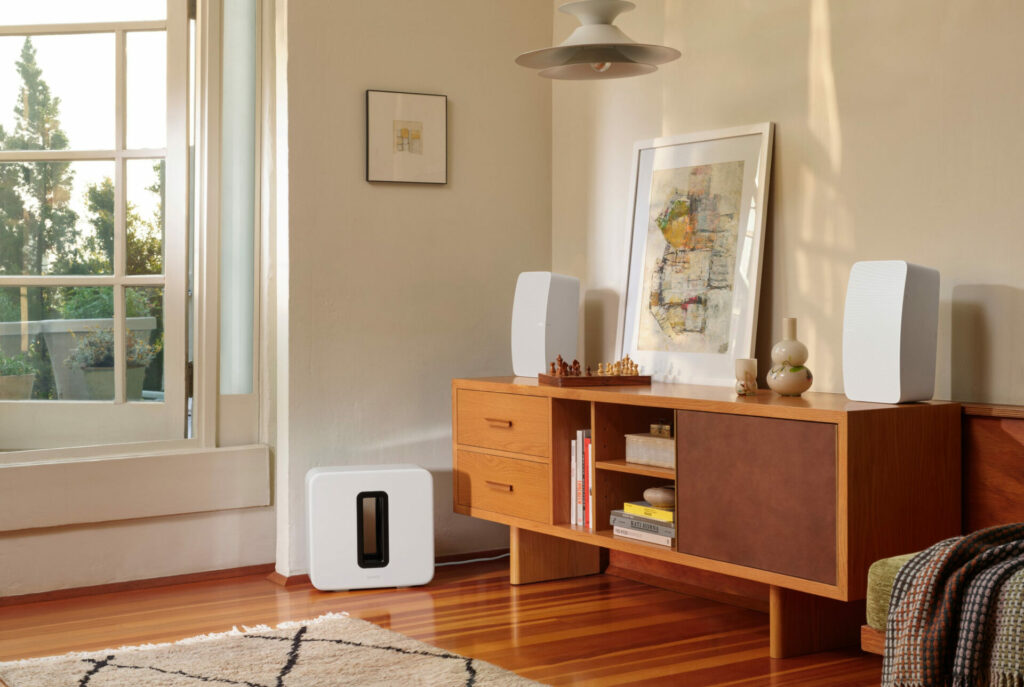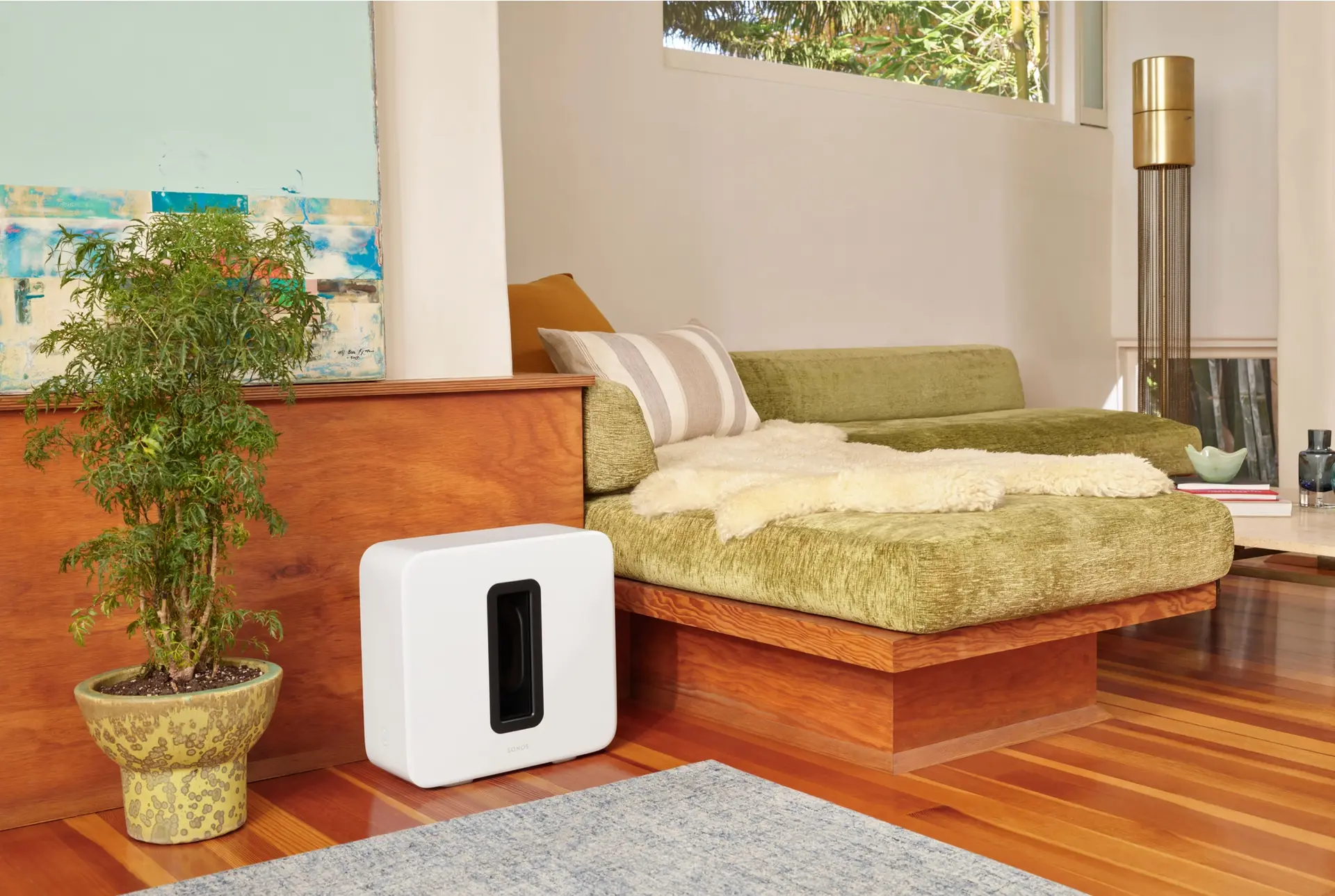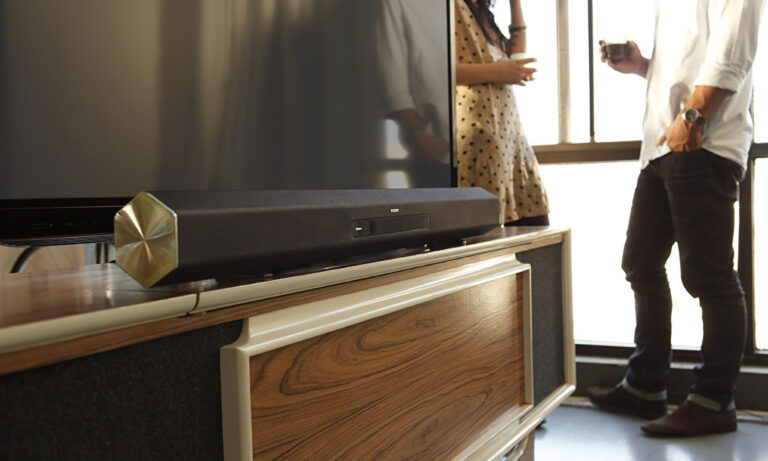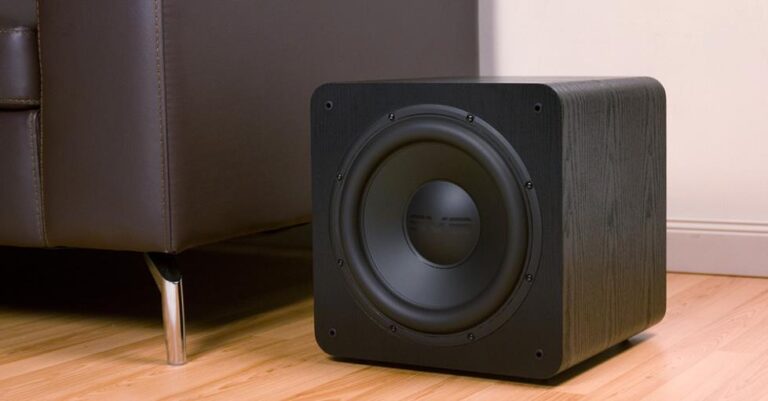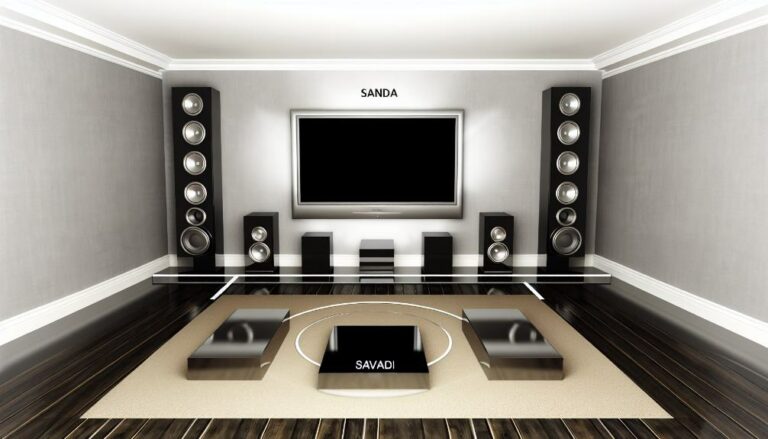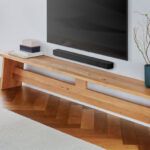Hey there! Are you looking to get the most out of your Sonos Sub? If so, then you’re in the right place.
In this article, we will look at how to strategically place your subwoofer to maximize its sound capabilities and ensure that you get the best listening experience possible.
We’ll cover topics like choosing the right location, avoiding interference with other devices, understanding room size effects, and testing different positions for optimal sound.
So, let’s dive in and find out how to get the most out of your Sonos Sub!
Choosing the Right Location
Don’t let your sound suffer! Finding the perfect spot for your speaker will make all the difference.
When it comes to placing a Sonos Sub, there are a few things you should consider. First and foremost, you want to put the Sub in a central location within the room. This will ensure that it can project sound evenly throughout the entire space.
You also want to be mindful of any nearby furniture or walls, as these may obstruct or reduce the bass effect of your Sub. Additionally, it’s essential to ensure you have enough clearance between any other speakers and the Sonos Sub. A minimum of 6 inches is recommended to avoid too much overlap in low-frequency sound waves.
Finally, if possible, keep your subwoofer away from large reflective surfaces like windows and glass doors, which can distort its performance. Following these tips will help make sure you get optimal audio performance from your Sonos Sub!
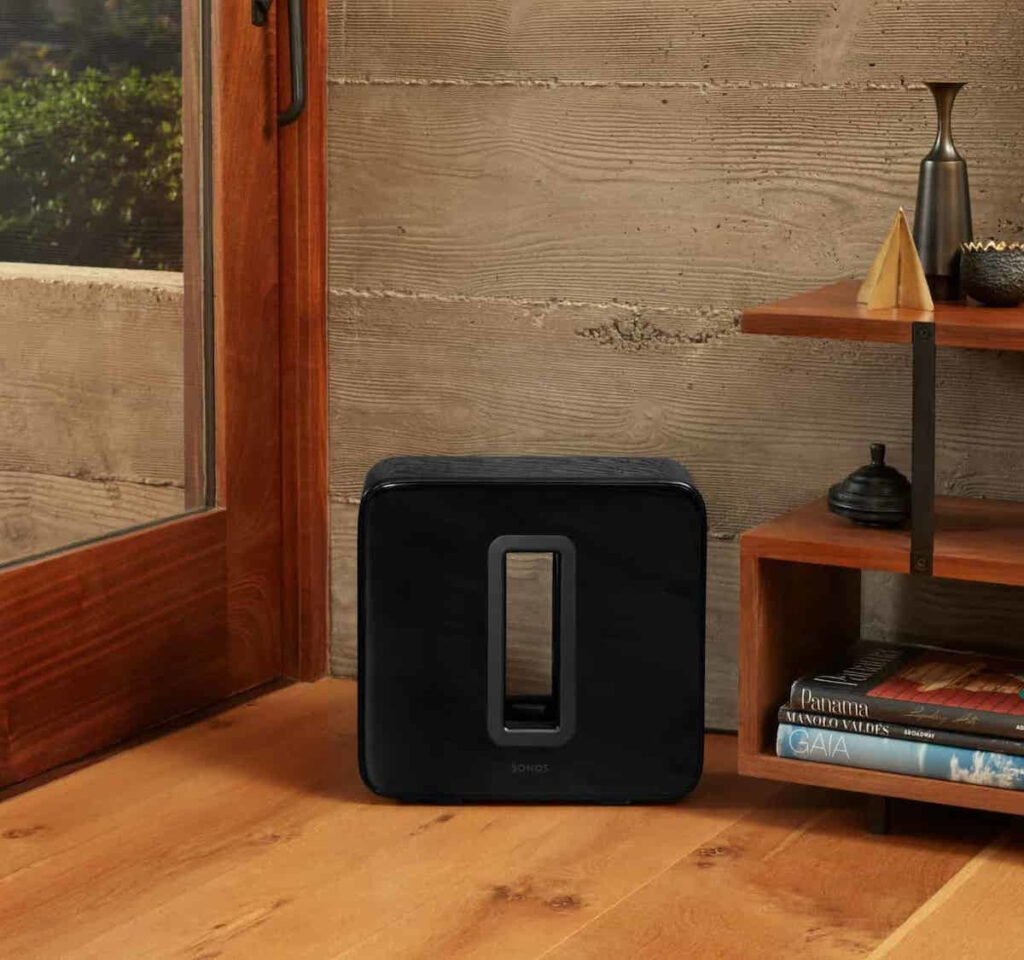
Avoiding Interference with Other Devices
Interfering with other devices can be a significant problem, so ensuring they don’t get in the way of your audio setup is essential! When placing a Sonos Sub, avoiding interference from nearby electrical equipment is necessary. This includes things like TVs, computers, and game consoles. Keep these devices at least three feet away from the subwoofer if possible.
Additionally, don’t place the Sub near speakers or amplifiers, as this could cause feedback or distortion in the sound. It’s also important to remember that wireless routers and Bluetooth receivers can interfere with audio signals, too. Try to keep these devices away from your Sub or use equipment that has better shielding against interference.
Placing the Sub in an enclosed space (such as under furniture) can also help reduce any potential interference. With proper planning and some experimentation, you should be able to find an ideal location for your Sonos Sub without worrying about interference from other devices!
Understanding the Effects of Room Size
The room size can significantly impact how your audio setup sounds – from reverberation to sound absorption; it’s essential to consider these factors when deciding where to put your subwoofer.
Smaller rooms tend to have more reverberations, making it difficult for bass frequencies to be heard clearly. To combat this, you’ll want to place the Sonos Sub in a corner or against a wall so that the sound waves are not bouncing off multiple surfaces.
Meanwhile, larger rooms don’t need as much assistance with reverberation and can benefit from placing the Sub in the middle of the room so that its audio is spread evenly across all directions.
Another factor that should be taken into consideration is sound absorption. For example, carpeting and soft furniture absorb more sound than hard surfaces like wood floors or tile, meaning you might want to avoid placing your Sonos Sub near any furniture that could absorb too much of its output.
Instead, try putting it on an elevated surface, such as a shelf or platform, so it’s not muffled by anything else in the room.
Placing Your Sub Away From the Walls
Consider positioning your subwoofer at least a few feet away from the walls to get the most out of your audio setup. This will give you an optimal listening experience as sound has less chance of bouncing off the walls and distorting or muffling the sound.
Here are a few tips for placing your subwoofer away from the walls:
- First, place it between two pieces of furniture, such as couches or chairs, to absorb some of the reverberations from the wall behind it.
- Avoid corners; this is where reflections can accumulate and distort sound quality.
- If you have carpeted floors, place the Sonos Sub on an area rug to absorb sounds bouncing off hard surfaces like walls and ceilings.
- Try experimenting by keeping only one foot away from each side wall — this should provide plenty of distance for bass frequencies not to be distorted by nearby surfaces.
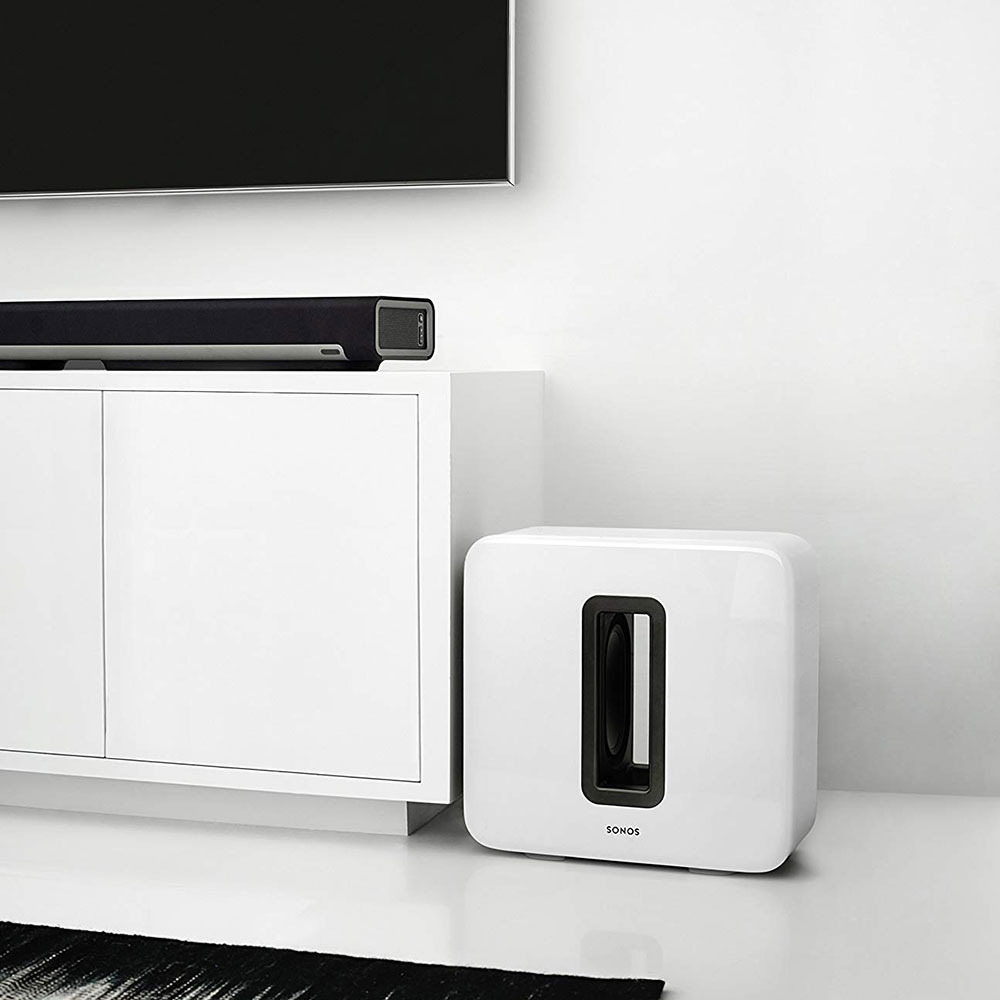
Testing Different Positions for Optimal Sound
Once you’ve got a few feet of distance between your Sub and any walls, experiment with different positions to find the best sound for your space!
Start by placing the Sonos Sub in the corner of the room. This is typically where bass frequencies will be heard most clearly. You can also try positioning it near an open doorway, which can help disperse sound evenly throughout the area.
Try moving it around in small increments until you find that sweet spot that provides enough bass without being overwhelming.
If you don’t have large furniture or other obstacles blocking the path of sound, then consider angling your Sub slightly towards any seating area to maximize its full potential.
Experiment with different angles (30-45 degrees) until you find what works best for your environment; some people may prefer a slight tilt, while others may prefer no tilt.
Additionally, if your space has multiple floors or levels, you could even look into getting two Sonos Subs and position them on either side of the room to provide balanced audio coverage for everyone!
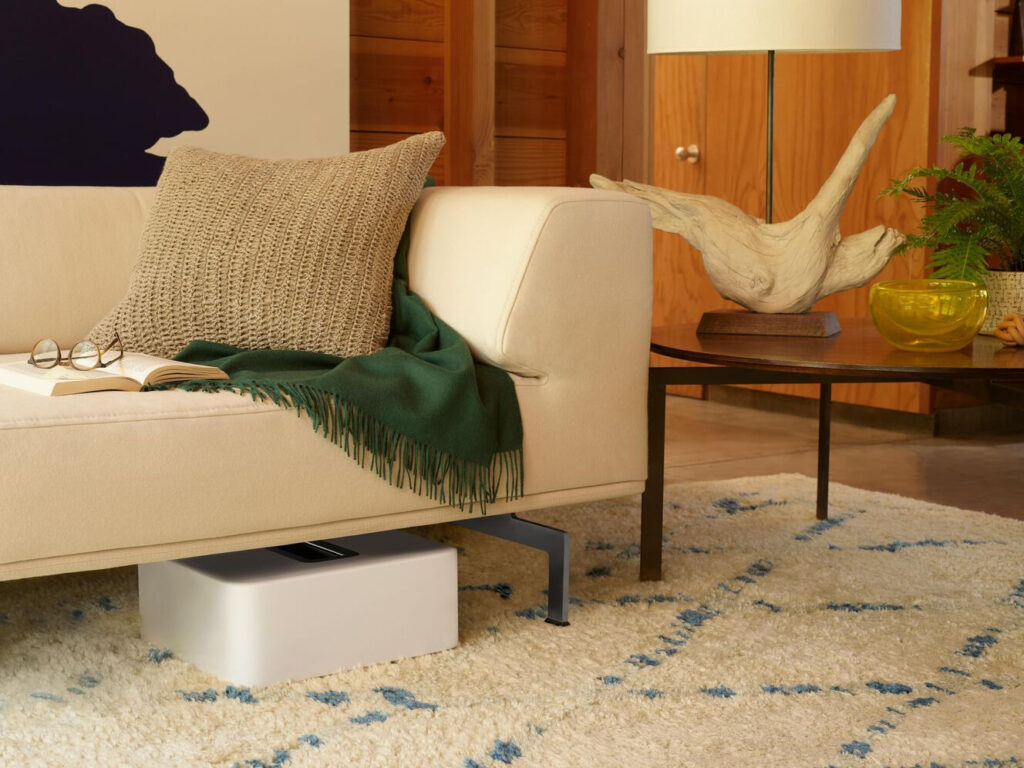
Final Thoughts
You’re almost there! You can enjoy the best sound experience possible with your Sonos Sub with a few simple steps.
Take the time to find the ideal location for your subwoofer and test different positions for optimal sound.
You’ll be sure to get the most out of your listening experience by avoiding interference with other devices, understanding the effects of room size, and placing your Sub away from walls.
Now all that’s left is to sit back and enjoy the immersive sound quality only a Sonos Sub can provide!
Frequently Asked Questions
Does the Sonos Sub require any additional setup?
Setting up a Sonos Sub is incredibly easy and requires no additional setup. You only need to wirelessly sync the device with your other Sonos speakers through the Sonos app.
Once connected, you can use the app to adjust the bass level to ensure it’s suitable for your space. With its sleek design and wireless connection capabilities, you don’t have to worry about cables or complicated installation processes – making it an ideal addition to any home theater system.
What is the power output of the Sonos Sub?
The Sonos Sub has an impressive output of 500 watts, which can quickly fill any room with rich and deep bass notes that you can feel in your chest.
Does the Sonos Sub have any built-in features to customize the sound?
Yes, the Sonos Sub has several built-in features to customize the sound. Depending on your preference, for example, you can adjust the bass levels in different rooms and even switch between stereo or mono mode.
The Sub also has an auto-calibration feature that helps optimize the sound for each room’s size and acoustics. With its advanced technology, you will surely get a truly immersive listening experience wherever you place it.
Is the Sonos Sub compatible with all Sonos speakers?
The Sub is designed to integrate seamlessly with other Sonos products, allowing you to create a rich soundscape in any room. So whether you’re looking for deep bass, immersive stereo sound, or surround sound, the Sub can help bring your music and movies to life.
With its wireless setup and easy-to-use app, it’s never been easier to enjoy high-quality audio wherever you want.
